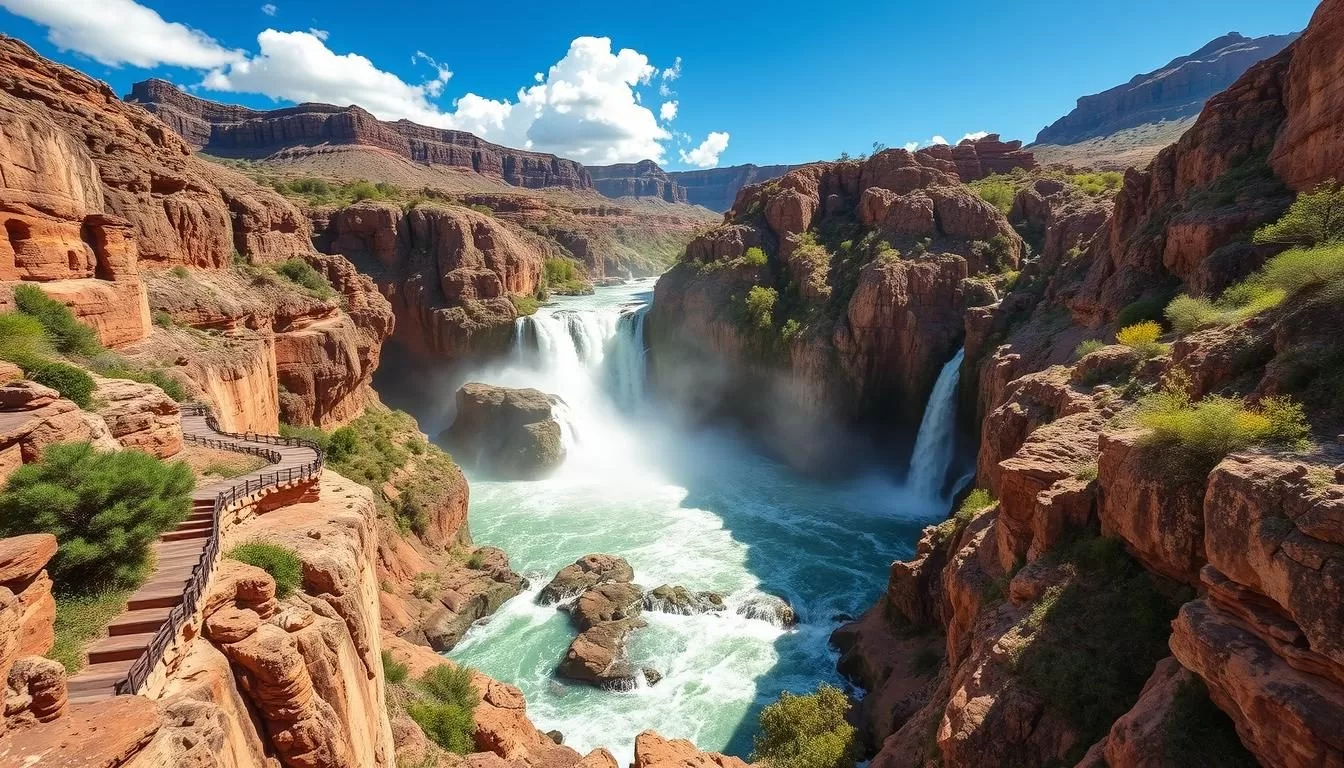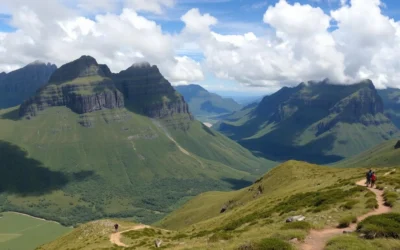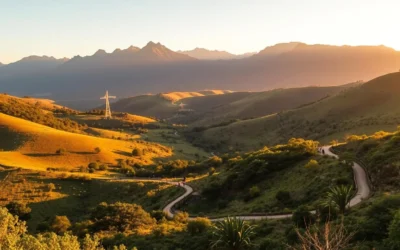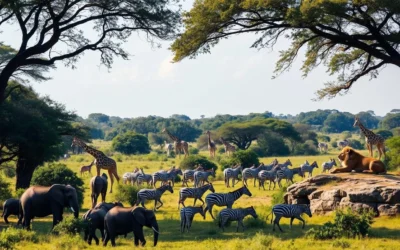✓ Accommodations✓ Flights✓ Rental Cars
Imagine standing at the edge of a mighty 56-meter waterfall, where millions of liters of water thunder down the Orange River Gorge every second. This is Augrabies Falls National Park, a spectacular natural wonder in the Northern Cape of South Africa.
The park’s unique blend of desert landscapes and granite formations makes it a must-visit destination. The Khoi people named this place “Aukoerebis” or “Place of Great Noise,” which it lives up to, especially during flood season.
As you plan your visit, get ready to explore the top activities and attractions that make this park stand out. With its breathtaking scenery and diverse wildlife, Augrabies Falls National Park is an unforgettable experience.
Discovering the “Place of Great Noise”
As you step into Augrabies Falls National Park, you’re immediately immersed in a landscape that resonates with the power of nature. The name “Augrabies” originates from the KhoiSan word “Aukoerebis,” meaning “place of great noise,” a fitting description for this spectacular waterfall.
The Legend Behind Augrabies Falls
The legend surrounding Augrabies Falls includes tales of a massive diamond cache hidden in the swirl-hole at the base of the falls. This captivating story adds to the allure of the park, drawing visitors into its mystique.
Location and Park Overview
Located around 120km from Upington in the Northern Cape province, Augrabies Falls National Park was established in 1966. It spans 820 km² along the Orange River, South Africa’s longest river. The park’s harsh climate means it receives only about 107 mm of rain annually, with summer temperatures soaring to 40°C. The contrast between the lush vineyards leading to the park and the arid landscape surrounding the falls is striking.
The park’s unique location and climate create a diverse landscape that’s home to a variety of wildlife and geological wonders, making it an exciting destination for nature lovers and adventurers alike.
Experience the Mighty Augrabies Falls
Augrabies Falls is a spectacle that will leave you in awe, as millions of liters of water thunder into the Orange River Gorge. The Augrabies Falls is a natural wonder that showcases the raw power of nature.
The Main Falls: Nature’s Spectacular Show
The main Augrabies Falls is a breathtaking sight, especially during flood season when 405 million liters of water plunge over the 56-meter drop every minute. As the falls reach their peak, 19 minor waterfalls combine into a torrential boom, creating an unforgettable experience.
The best time to photograph the main falls is at sunset, when the late afternoon light creates perfect conditions, even when the water levels are low.
Best Viewpoints to See the Falls
Fortunately, there are many viewpoints strategically placed around the Augrabies Falls that allow you to see falls from different angles and experience its might. You can marvel at the sheer power of the Augrabies Falls and understand why it’s considered the best waterfall in South Africa.
| Viewpoint | Description | Best Time to Visit |
|---|---|---|
| Main Viewpoint | Closest view of the falls | Sunset |
| River Gorge Viewpoint | Panoramic view of the Orange River Gorge | Morning |
| Waterfall Edge Viewpoint | Directly above the falls | Afternoon |
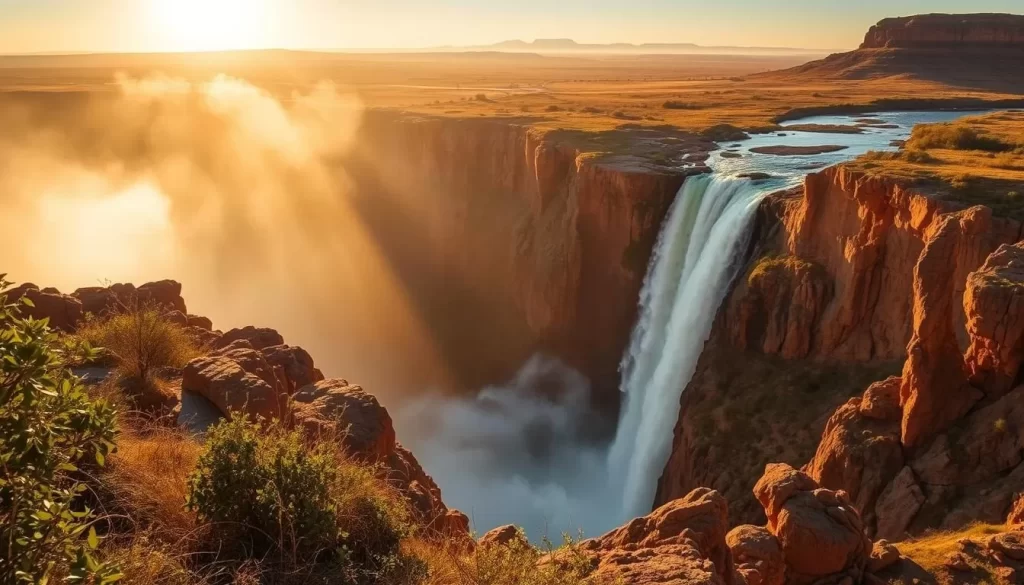
Top Hiking Trails in Augrabies Falls National Park
Augrabies Falls National Park is a hiker’s paradise, offering trails that range from leisurely strolls to challenging multi-day adventures. The park’s diverse landscape provides a unique hiking experience, with trails that cater to different preferences and fitness levels.
Dassie Trail: Perfect for Day Hikers
The Dassie Trail is a moderate, circular 6.5 km route that takes you from the main camp to Arrow Point and includes highlights like Moon Rock and Potholes. This trail is ideal for day hikers, offering a chance to experience the park’s scenic beauty without committing to a multi-day hike.
Gorge Trail: Scenic River Views
The Gorge Trail is a 2km hike that offers spectacular surroundings, leading you to Twin Falls and Arrow Point. This trail is perfect for those looking for a shorter, scenic walk that still provides breathtaking views of the park’s landscape.
Klipspringer Trail: Multi-Day Adventure
For those seeking a more challenging experience, the Klipspringer Trail is a 35km, three-day, two-night self-guided adventure. This trail requires advance booking due to its popularity and is closed between October and March because of the heat. It’s a great option for hikers looking for an immersive experience in the park’s wilderness.
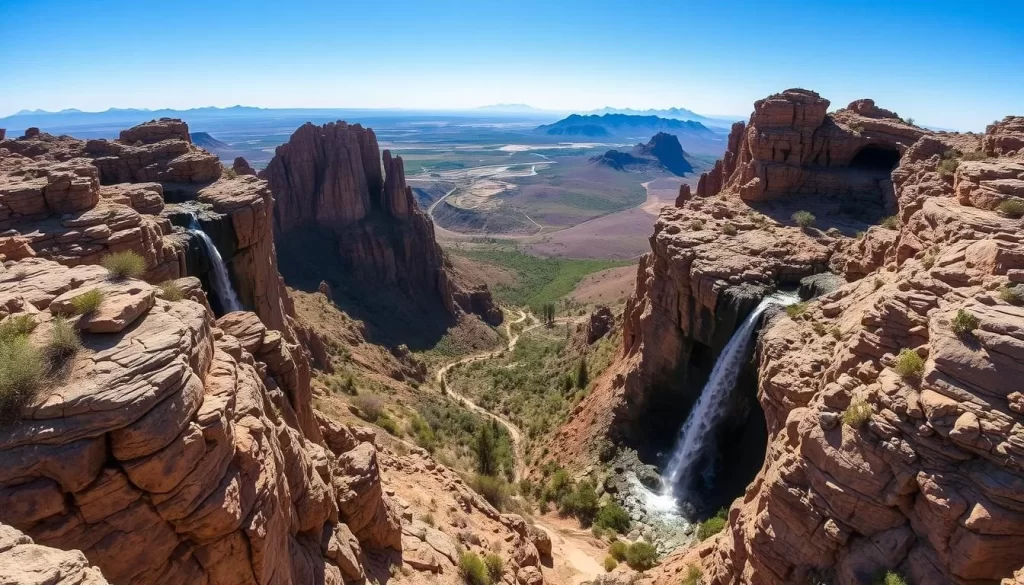
Must-See Geological Wonders
The park’s diverse geological features make it a paradise for nature enthusiasts and geology buffs alike. As you explore the area, you’ll come across formations that have been millions of years in the making.
Moon Rock: Ancient Granite Dome
Moon Rock is a massive gneiss dome, one of the largest granite domes in the park. Its smooth top is the result of layers of rock peeling away over time, much like the layers of an onion. From its summit, you can see other granite rocks gleaming in the distance.
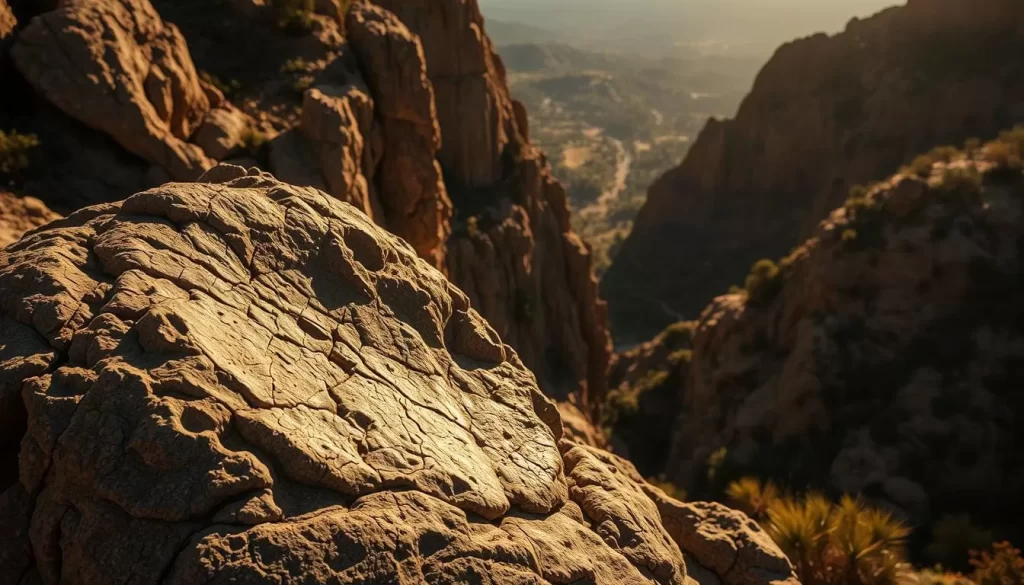
Arrow Point and Twin Falls
On your way to Arrow Point, you’ll pass Twin Falls, a gentle cascade of two sequential falls creating a beautiful scene. Arrow Point is where two gorges meet, offering one of the best views back up the gorge into which the main falls drop. The rocks here are truly incredible.
Wildlife Spotting Opportunities
As you explore Augrabies Falls National Park, you’ll discover a surprising array of wildlife thriving in its arid landscape. The park is renowned for its rich biodiversity, hosting a wide range of species that have adapted to the challenging environment.
Mammals and Birds to Look For
The park is home to 47 mammal species, including springbok, gemsbok, kudu, klipspringer, and the rare Hartmann’s mountain zebra. You may also spot wildlife such as giraffe, African wild cat, and leopard. Keep an eye out for smaller creatures like mongoose, dassie, and lizards, particularly around the camp areas.
Best Times and Places for Wildlife Viewing
For optimal game viewing, visit during the early morning or late afternoon when animals are most active. Echo Corner is a must-visit spot, not only for its scenic beauty but also for its unique acoustic phenomenon. The park’s unique vegetation, including the endangered quiver trees (or kokerboom in Afrikaans), adds to its natural charm. These trees, historically used by the San people to create quivers for their arrows, are a highlight of the park’s flora.
| Wildlife | Best Viewing Times | Locations |
|---|---|---|
| Springbok, Gemsbok | Early morning, Late afternoon | Open grasslands |
| Giraffe, Kudu | Morning, Afternoon | Near water sources |
| Mongoose, Dassie | Anytime | Around camp areas |
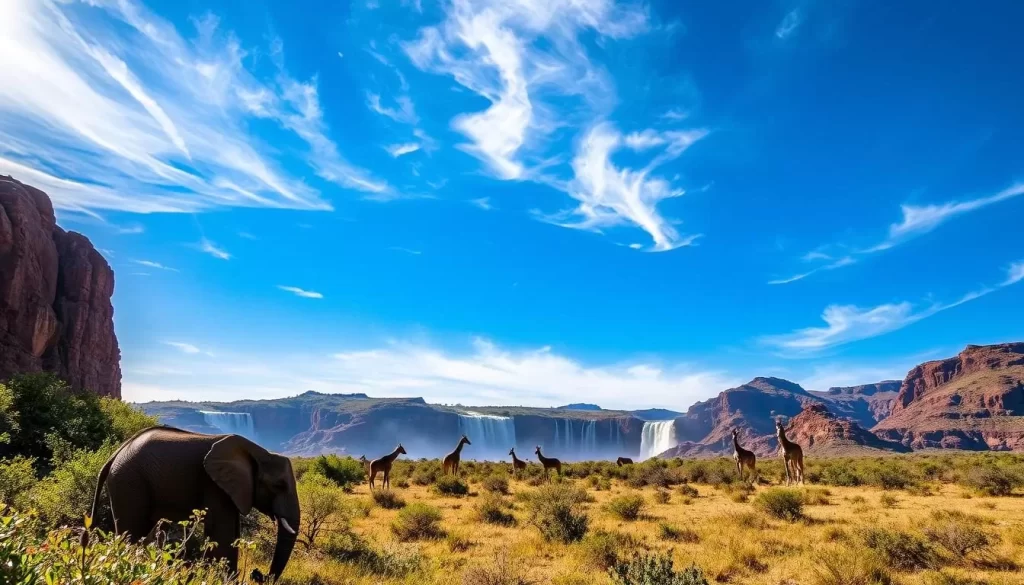
Where to Stay in Augrabies Falls National Park
To fully immerse yourself in the natural beauty of Augrabies Falls, consider staying within the park. The Augrabies Falls National Park offers a variety of accommodation options to cater to different preferences and budgets.
Rest Camp Accommodation Options
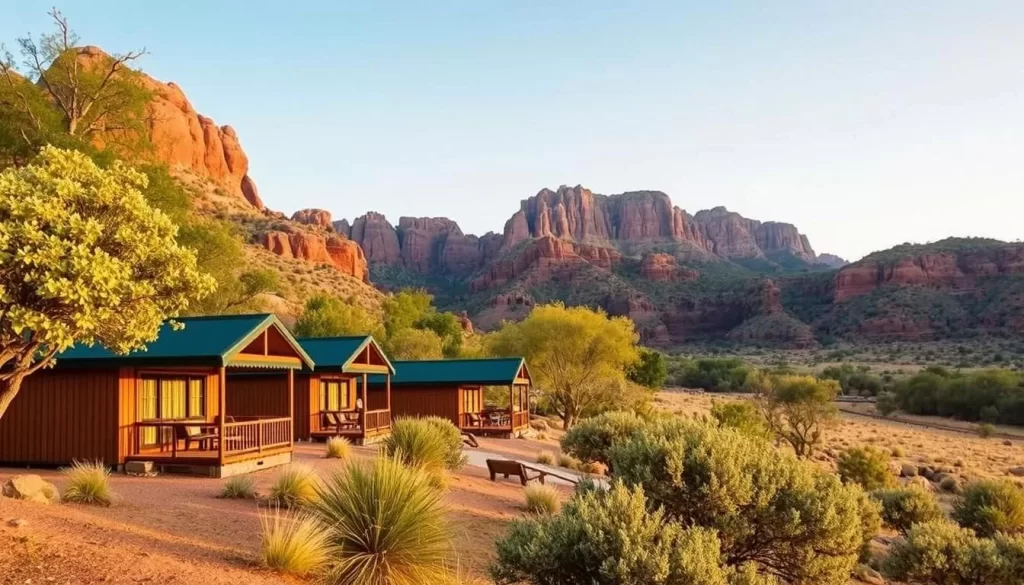
The Rest Camp within Augrabies Falls National Park provides self-catering chalets and cottages, all equipped with kitchens or kitchenettes for convenient meal preparation. You can choose from a range of accommodation types, including family cottages and campsites. The Oranjekom Gorge Cottage is a unique option for couples, offering breathtaking views of the Orange River.
The park’s facilities include three swimming pools for residents, one swimming pool for day visitors, an on-site licensed restaurant, and a shop with basic supplies. Petrol and diesel are also available on site.
Nearby Lodges and Alternatives
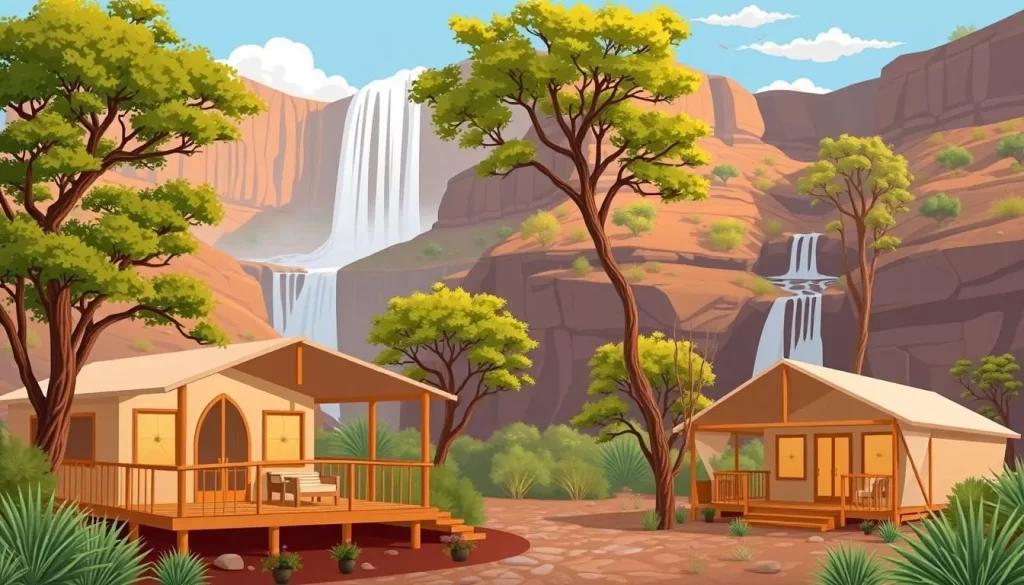
For those looking for alternative accommodation options, there are nearby lodges that offer comfortable stays. Staying within the park, however, allows you to explore the area early in the morning and late in the evening after day visitors have left, and enjoy the Augrabies Falls illuminated at night.
Choosing to stay within the park enhances your overall experience, giving you ample time to appreciate the natural beauty and wildlife of the area.
Planning Your Visit to Augrabies Falls National Park
To make the most of your visit to Augrabies Falls, understanding the optimal time and preparation is key. The best time to see the falls in full flow is between March and May when temperatures are cooler. Summer months, from November to February, can be extremely hot, reaching 42°C in the shade.
You can fly into Upington and drive 120 km west to the park, making it a feasible day trip or longer stay. While a 4×4 vehicle isn’t necessary to see the falls, it’s recommended for exploring the park’s vast areas, especially during the rainy season.
Essential tips include bringing bottled water, as tap water is not safe to drink, and being prepared for the climate with appropriate clothing and sun protection. Planning your day around the best times for wildlife viewing, photography, and hiking will also enhance your experience.
The above is subject to change.
Check back often to TRAVEL.COM for the latest travel tips and deals.
